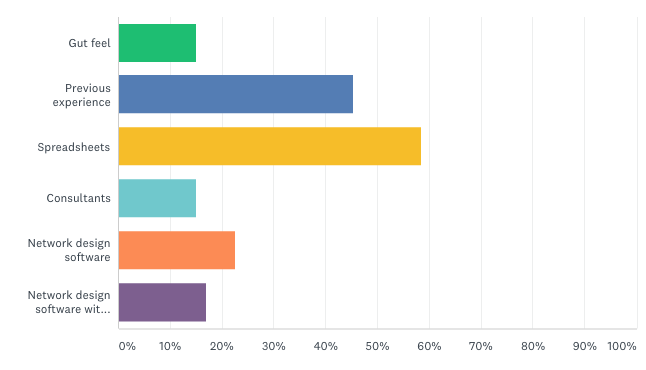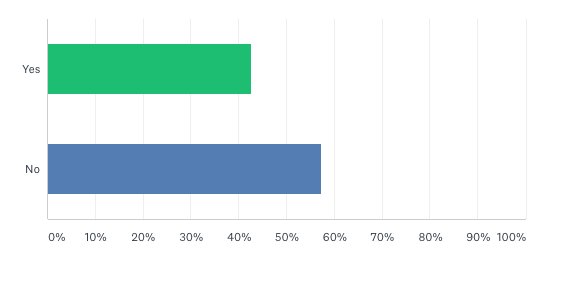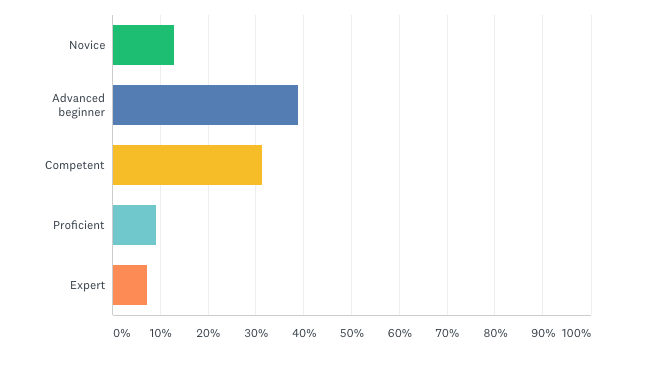What Are Supply Chain Professionals Using to Make Network Decisions?
Part I in our series on assessing your supply chain network’s maturity
How does your supply chain network design compare to others? We recently created a quiz to help professionals answer this question. Our goal was to help you identify potential improvement opportunities by answering a few questions and getting a temperature check on the current landscape of network design solutions. We had quiz takers from 23 countries and across industries – from chemicals to manufacturing, metals, telecom, cosmetics, consumer goods, transportation, and food. It’s great to see the enthusiasm for this interactive tool.
Our findings show that most respondents rely on a combination of spreadsheets (nearly 60%), gut feel (15%) and previous experience (46%) to make supply chain network decisions. Only about 22% use network design software and 18% use network design software with embedded analytics among this group.

More than half of the professionals assessed indicated that they didn’t use some form of advanced analytics to support their network design process. None of the respondents share data across multiple applications to manage inventory, supply chain network design and S&OP in an integrated way.

When asked to assess their maturity level in using network design technologies, most professionals stated that they considered themselves “advanced beginners” (nearly 40%), followed by “competent” (32%), “novice” (12%), and “proficient” at 8%.
It’s time to kick the spreadsheet habit
These quiz responses are fairly consistent with a 2017 survey by Lora Cecere’s Supply Chain Insights, which revealed that 65% of companies use spreadsheets for supply chain network design. Spreadsheets are inexpensive and familiar. People often stick to using them because they think they can’t afford a more advanced solution. Some also think the solutions available in the market are too difficult to use or too expensive.
The truth is, that companies that use spreadsheets for network design are leaving major opportunities on the table. The more complex the network, the harder it is to make spreadsheets work. Spreadsheets are also known for being error-prone. In fact, as Market Watch reports, close to 90% of spreadsheet documents contain errors. They don’t support robust optimization and they are unsustainable. Managing data across multiple spreadsheets quickly becomes unmanageable. If the person who initially created the spreadsheet leaves the company, it’s often harder for other users to understand the built-in logic as well.
It’s time for companies to kick their spreadsheet habit. Lower infrastructure costs and advances in cloud computing have made supply chain optimization technology a lot more accessible. Care should be exercised though, because the same reasons that have made the technology more accessible should’ve made it more affordable. But unfortunately, that’s not always the case. Find the right partner to work with that can help your team make a big step forward and build this competency. The benefits can be considerable. Your team can reduce time spent on low-value work and spend more time driving impact.
Get more research insights in our Buyer’s Guide for Supply Chain Network Design Software and speak to one of our experts to see how AIMMS can help you transform network design within your organization.







